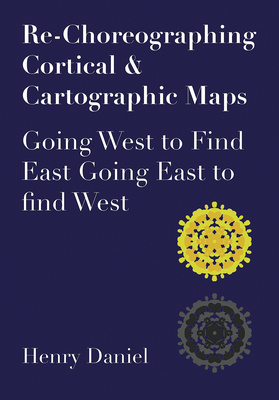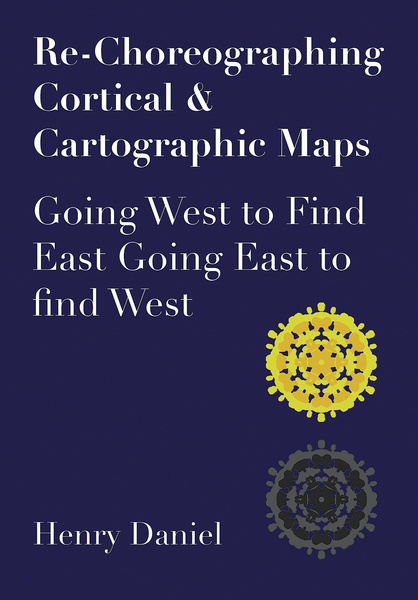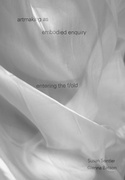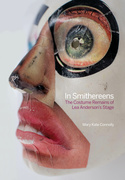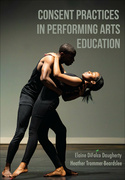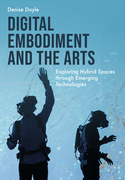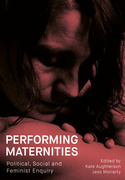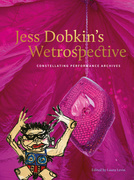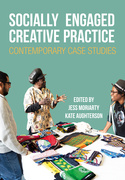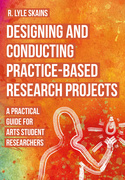Re-Choreographing Cortical & Cartographic Maps (Book)
Going West to Find East Going East to Find West
A substantial contribution to current discourses in dance, choreography and performance, especially in the area of Practice-as-Research. Reflects the perspective of the author as scholar, choreographer, performer, and arts practitioner, with an extensive background in both the professional world of dance and the intellectual academy. 49 b&w illlus.
Click here to view the free chapter:
'An Epilogue: Fitting [Out-fitting] In'
Edition
A transdisciplinary approach to practice-as-research, complete with its own elaborate theory of practice and a set of four multi-year-performance research projects through which the theory plays out. Its methodology is at times ethnographic as Henry Daniel deftly inserts himself and his Caribbean West African ancestry into a series of complex cortical and geographic maps, which become choreographic in every sense of the term.
The central argument in the book is based on a claim that human beings are cognitively embodied through their own lived experiences of movement through space and time; the spaces we inhabit and the practices we engage in are documented through cortical and cartographic maps. In short, as we inhabit and move through spaces our brains organise our experiences into unique cortical and spatial maps, which eventually determine how we see and deal with, i.e., ‘become’ subjects in a world that we also help create. The argument is that through performance, as a re-cognising and re-membering of these movements, we can claim the knowledge that is in the body as well as in the spaces through which it travels.
To demonstrate how the brain organises our experiences of the world according to cartographic (graphically mapping procedures) and cortical (motor, sensory and visual functions) mapping and exploring the impact of this mapping to choreographic practice, considering how maps might be disrupted or altered by change of circumstances. This is illustrated through scientific, creative and reflective approaches to exploring neurological process of embodied experiences, as well as the analysis of projects that have utilized this practice thus far.
Audience will include Dance and Performance Studies Scholars; Dancers and Choreographers; Undergraduate and Advanced Students; Researchers
Henry Daniel is a distinguished SFU professor, professor of dance, performance studies and new technology, scholar, performer, choreographer, and Artistic Director of Full Performing Bodies. Daniel’s research concentrates on strengthening notions of Practice-as-Research (PaR), Arts-based- Research, and Research/Creation in Canada. He leads a group of artists and scholars who help define new parameters for excellence in these areas. He has a professional background in dance, theatre, and new media with a career that started in his native Trinidad & Tobago and continued in the USA, Germany, the UK, and Canada.
Full biography at www.henrydaniel.ca/about
List of Figures
Acknowledgements
Prologue
ACT 1
1. Autoethnography as a Methodological and Ideological Starting Point
- A beginning of sorts
- Will the artist please stand up?
- Introducing the map
- Microcosm vs. macrocosm
- Mediating difference
- Choreographic organization
2. The Hypothesis Explained
- Theory, perception, process and practice
- Implications
- Embodiment and disembodiment
- Science, art, culture and the transdisciplinary mandate
- Self-knowing
- Movement, language and non-discursive thinking
- Mirroring
- Preliminary conclusions
3. Further Presuppositions and Explorations in Search of a Theory of Practice
- Revisiting the hypothesis
- Shango Meets Ogun
- Performing disembodiment
- Futurist Equation
- The futurist/humanist condition
- Re-cognizing/re-membering
- The lived machine
- Performing consciousness
- Scales and dimensions, movement and sound
- Further conclusions
ACT 2
4. Transnet
- Performing art, performing science, transdisciplinary approaches to performance
- Significant contributions
- Choreography as transdisciplinary Practice-as-Research
5. New Performance Maps
- The Touched Project: Organization, control and emergence in choreographed performance systems
- Touched
- t2
- t2_echo
- Imprint
- Imprint II
- Embodied choreographic knowing
6. Going West to Find East
- Choreographing from the underside
- Haikai, Encounters and Here Be Dragons (Stage I Creative Preview)
- Barca: el otro lado
- A barca: Reaching back to go forward
- ambos lados
- Isabella’s Dream
ACT 3
7. Contemporary Nomads
- Nomadism
- nómadas
- nómadas 2018_excerpts
- On Home
- Multiple presences: Movement through space/time holes
- The real and the virtual, reality and the dream
- Performing the self: Movement as an unfolding and initiating of thought
An Epilogue: Fitting [Out-fitting] In
- Who is he fooling and what is he really doing there?
- Who am I and why am I here?
- Fitting [Out-fitting] In
- So, what’s your background?
- Where are you from? I mean, where are you really from?
- Oh! You’re a Professor? What do you teach?
- What’s ahead?
- Finale
Appendix A: Artisitic Works by the Author
- Multi-year research projects referenced
- Short-term stand-alone works mentioned
Appendix B
- Map A
- Map B
- Map C
Bibliography
Index
'Daniel explores performance practice research as a transdisciplinary context for describing the embodied experience of liminality as expressed in the volume's subtitle. Through a complex scaffolding of philosophy, cultural studies, cartography, and neuroscience, he considers subject formation as enacted through performance, positioned here as a survival response. Reviewing a body of creative works produced across 20 years, the author argues for "worlding" as an extended performance event. Part autoethnography, part review of emergent discourses of embodied knowledge, the text bristles with anecdotal analyses of successive performance projects. [...] Well-chosen images and a companion web-based archive of performances enhance this retrospective self-appraisal of multiyear performance projects. Overall, Daniel illustrates in a personal way how the self emerges dynamically by "performing its way through" various environmental, political, and socioeconomic frameworks that colonizing processes impose. Recommended'

